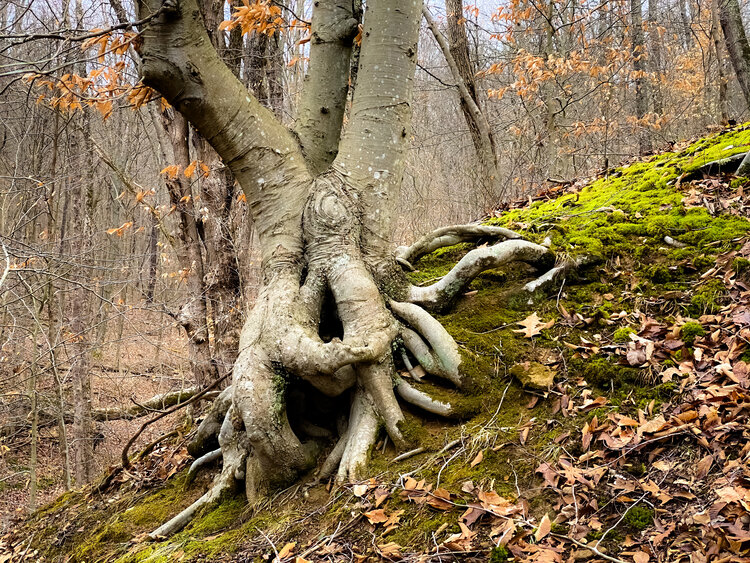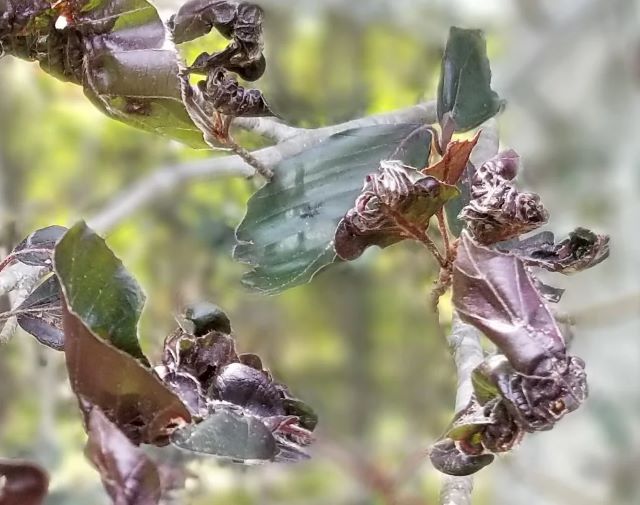As the human race marches on, we identify certain parts of society as being iconic representations of a decade or generation. We often identify these with the arts in the forms of music, painting, architecture and fashion. Plants have often served as milestone markers as well. Tulips, Roses or one of the most iconic trees in U.S History the American Chestnut have all inspired warm memories. Today, in New England, we are witnessing the slow decline of yet another iconic tree, the American Beech (Fagus grandiflora).

The iconic Beech sports a massive trunk outfitted in smooth gray bark, these trees form large groves that provide delightful shade on hot summer days. Small white flowers are hard to see in late spring, but the spiny fruits that arrive in late summer and early fall are hard to miss. Chipmunks are a frequent species collecting the fruit! Dark green, toothed leaves fade to a papery brown in fall and refuse to let go- possibly a defense mechanism against deer.
Not Just One Disease
A recent ‘one, two punch’ has put this amazing colonizing species at significant risk for extinction. First, the Beech Bark Disease migrated down from the North. A scale insect initiates the wound making way for a bark canker fungus called Neonectria. This is sometimes called ‘Shotgun Fungus’ and appears as dark lesions on the bark of the tree. The second threat arrived a few years ago via Beech Leaf Disease. This is a foliar nematode spread by wild birds and can be identified by looking for yellowing in the venation of the leaves as well as stunted leaf growth and curling.
There are no practical controls for wild trees. For homeowners with either the American or European Beech, contact your local arborist to discuss options.
Succession Planting
Beech are also known for being tough competitors in the forest and are sometimes described as allelopathic meaning their roots may secrete chemicals that suppress the growth of other plant species. This is something to take note of as we monitor the continued decline of the species as it will be important to have succession species in the understory. Perhaps those areas will remain sterile for some time and nothing will grow? Maybe an invasive species will take hold? Perhaps a unique native will adapt? What is certain is that the Beech is suffering and many trees will likely succumb to the multiple pressures they face. However, the forest is resilient and always finds a way to make use of the plants of the past for the forest of the future.


